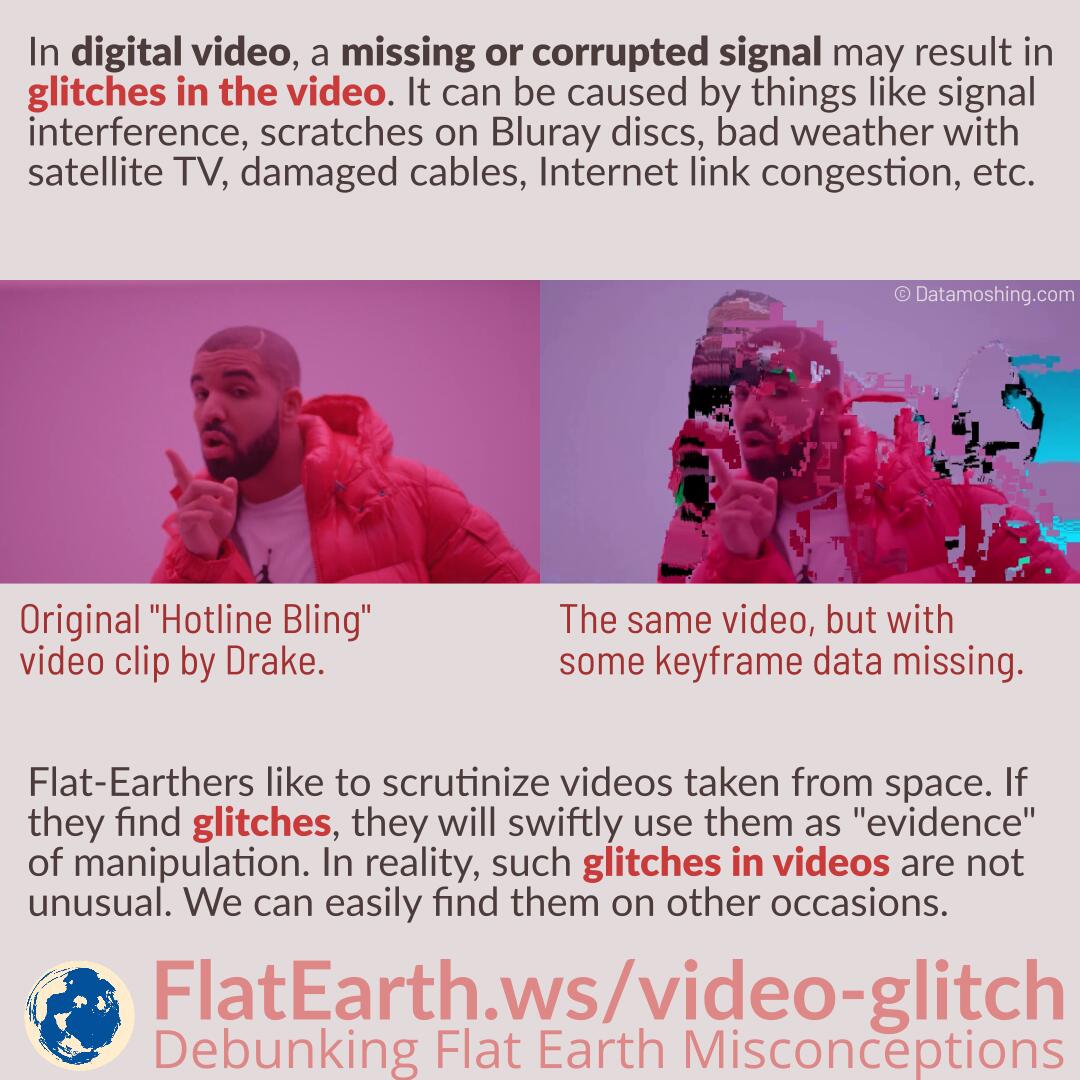In digital video, a missing or corrupted signal may result in glitches in the video. It can be caused by things like signal interference, scratches on Bluray discs, bad weather with satellite TV, damaged cables, Internet link congestion, etc.
Flat-Earthers like to scrutinize videos taken from space. If they find the glitches, they will swiftly use them as “evidence” of manipulation. In reality, such glitches in the videos are not unusual. We can easily encounter them on other occasions.
Digital video data consists of several frames per second, typically 24 or 30 frames per second. There are three major types of frame:
- I-frames contain the entire frame data. The whole frame can be constructed only by the data provided by an I-frame.
- P-frames contain only the difference from the previous frame.
- B-frames contain only the difference from both the previous frame and the next frame.
If the transport used by the digital video does not guarantee data integrity, the data might not arrive intact at the decoder. Some frames might be missing and will affect the presentation. The decoder is designed to cope with missing or corrupted frames and will do whatever it can to reconstruct the pictures with the available data, but it may result in glitches to the viewer.
Some published videos that were taken from space have these glitches. Flat-Earthers are always on the lookout for these glitches, and when they find one, they will proclaim to have found another “proof of manipulation” or something like that.
YouTube videos do not have these glitches because the videos are transmitted over HTTP, which guarantees data integrity. If the data does not arrive intact, HTTP will ask the sender to retransmit, and the decoder does not get the data until the correct data comes. If that happens, we do not see a glitch, but the video will stop playing until it gets the data it wants.
References
- DataMoshing
- Video compression picture types – Wikipedia


